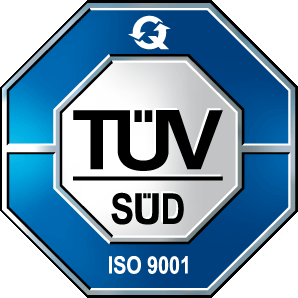
stay up to date
Subscribe to the Ignite Magazine Newsletter
Anti-static, Coating, Electrical Conductivity, PVC
Advancing Mine Safety: GERPHOS’ Innovative Flame-Retardant Solutions for Enhanced Ventilation Duct Conductivity
The mining accompanies human activity from the down of our civilization. Our Palaeolithic ancestors mined hematite to make the red pigment ochre or flint for weapons and tools. Today, the global mining industry is estimated at US $1,783 billion, with a growth fuelled by the surge for metals and minerals used in electronic components.
The modernization of mining technologies lead to a tremendous improvement of the safety of mine workers. However, working in the harshest conditions on the planet, kilometres underneath the Earth surface, the biggest threat to life of the miners remain faulty ventilation systems.
These underground networks of duct tubes, sometimes kilometres long, are built to pump the fresh air into the lowest levels in mines. While supporting miners with much needed oxygen, they possess life-threatening mechanical properties. The friction of the air stream inside of them can cause an electric charge, which in the worst cases could ignite a fatal fire. Therefore, the ducts made of PVC coated polyester fabrics, must be not only flame retarded but also electrically conductive.
The flame retardancy is usually obtained by using Antimony trioxide in the polymer matrix, which exhibits good mechanical properties, especially the material flexibility. However, its use degrades the electrical conductivity of the PVC layer. To maintain both FR properties and high conductivity, the ducts producers must use either anti-static agents, which unfortunately increase the flammability, or overload bottom layers with Antimony trioxide, which turns to be a very expensive solution.
We have overcome this conflict with GERHOS flame retardants. Gulec laboratories designed a highly conductive flame-retardant application for PVC coated fabrics. With its low electrical resistance, low smoke generation and high flame retardance GERPHOS fulfils all mandatory technical requirements while keeping the production costs optimized.
The challenge to solve what seems unsolvable moves GULEC forward. Our mission is to contribute to the legacy of the generations of chemical engineers racing to find formulas that advance the entire industry. May you also face the challenging production requirements, or you are unhappy with the current FR solution, please book a consultation with our R&D department here.
MORE FROM IGNITE MAGAZINE
Coming Soon: GERPHOS® 430 NEO — A TPP-Free, REACH-Compliant Flame Retardant Alternative for PVC Applications
Looking for a TPP-free flame retardant alternative? GERPHOS® 430 NEO is GULEC’s upcoming drop-in solution for flexible PVC applications. With typical TPP content below 0.1%, it meets REACH compliance while maintaining proven performance. Launching January 2026, with samples available from September 2025.

Plant-Based Leather Alternatives: Pioneering Sustainability with Advanced Flame Retardants
What if the future of fashion and upholstery is growing in a field, not a factory? How are plant-based leathers and advanced flame retardants redefining sustainability and style? Discover the innovative materials paving the way for a greener tomorrow.
Eco-Friendly materials, Innovation, Plant-based, Sustainability, Vegan Leather

Pioneering Fire Safety in Aviation’s Greener Era
Aviation enters a new horizon, redefining the boundaries of safety with cutting-edge flame retardant technologies. Discover how the future of flying could soar with innovative materials designed to meet the highest safety and environmental standards.
Aviation, Circular Economy, Halogen-free, Light Weight Materials, Novel Polymers





